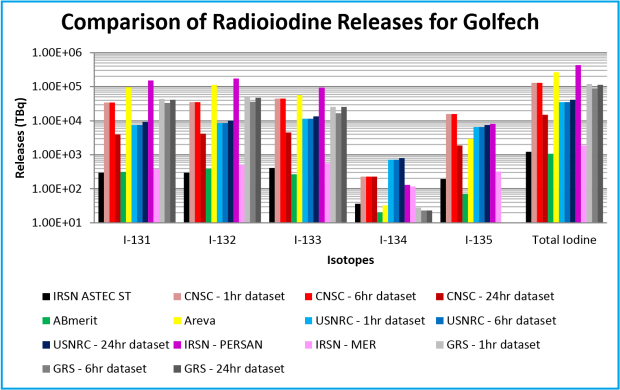OECD NEA project: FASTRUN
OECD NEA project: Benchmarking of Fast-Running Software Tools Used to Model Releases During Nuclear Accidents, 2013-2015
The objective of the project was to benchmark software tools used to estimate consequences of accidents at nuclear facilities. Two aspects of accident consequences were considered: amounts of radioactive material releases (source term) as well as public doses resulting from such releases.
Software tools evaluated in the benchmarking project demonstrated the ability to:
- Calculate fission-product source terms and provide an estimate of core damage state and the condition of the physical barrier;
- Calculate radiological doses from fission product releases during initial accident stages;
- Execute with a small number of input parameters (at the start of a nuclear accident only limited information will be available for use);
- Incorporate additional details as more information becomes available and improve the predicted results;
- Model fission-product releases from different reactor technologies;
- Complete calculations rapidly in support of protective-action decision-making;
- Predict source terms and radiological doses accurately. Source terms which were considered in the frame of the project as "accurate by definition" were calculated for each accident sequence by the code MELCOR or code ASTEC. Results of software tool benchmarked in the project were compared with source terms "accurate by definition" which were calculated by MELCOR or ASTEC codes;
- Produce results in a clear, user-friendly and logical manner for use in making protective action recommendations
Figure - example of benchmarking results, see the report NEA-CSNI-R(2015)19.pdf:

The report is also available here:
